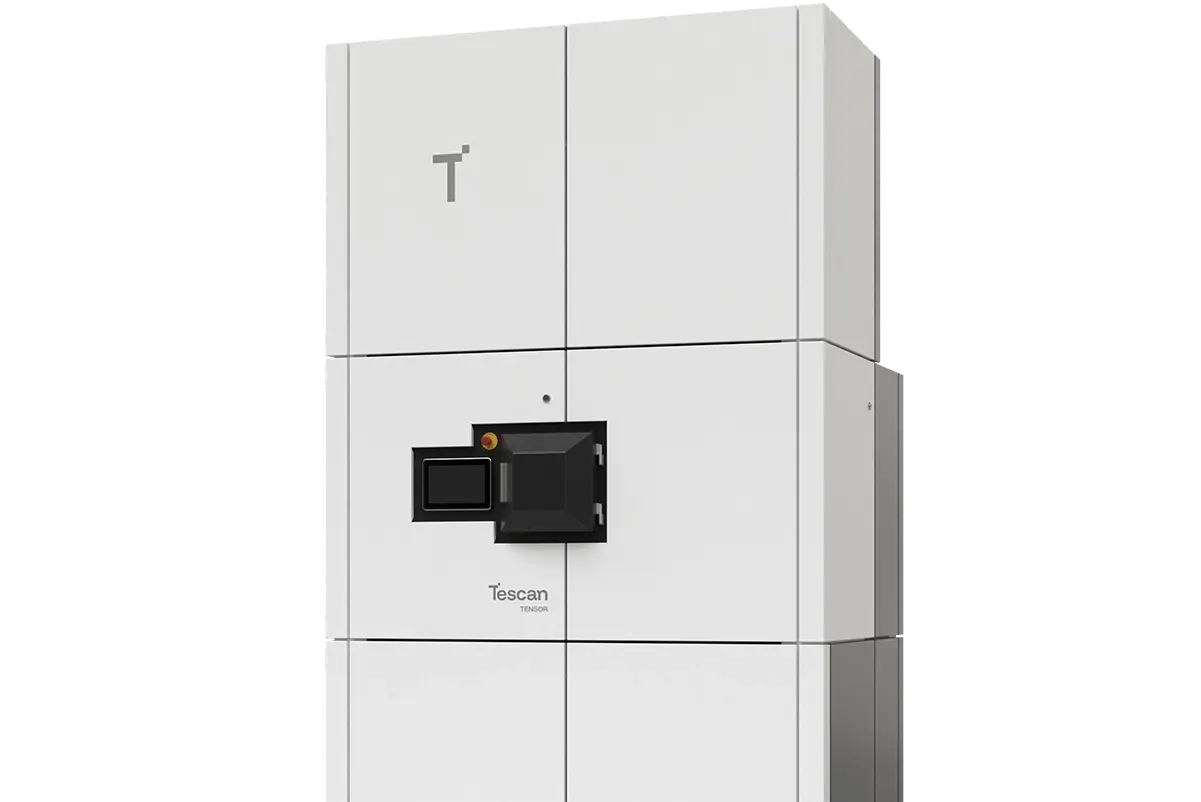1. Root of the Problem
Why Conventional STEM Diffraction Falls Short in PCM Failure Analysis
Phase change memory (PCM) devices rely on precise crystallization in GeSbTe layers, but conventional STEM diffraction often struggles with accuracy. Dynamical scattering, forbidden reflections, and Kikuchi lines obscure critical details — leaving segregation, incomplete crystallization, and grain orientations unresolved.
Standard workflows also require multiple steps across separate imaging and diffraction tools, slowing analysis and introducing interpretation errors. As a result, failure mechanisms such as RESET/SET instability often remain poorly understood.
Tescan TENSOR with precession-assisted 4D-STEM solves these challenges by delivering accurate phase and orientation maps in a single workflow.
- Precession reduces diffraction artifacts for reliable strain and phase analysis
- Orientation maps clarify grain boundaries and crystalline vs amorphous regions
- Cross-sectional phase mapping links structural variations directly to PCM failures
- Real-time 4D-STEM accelerates data collection across large PCM arrays
With Tescan TENSOR, users gain fast, reliable insight into the root causes of PCM device failures and can connect microstructural variations directly to device reliability.
2. Materials and Methods
How Phase Mapping for PCM Reliability Studies Was Performed Using Tescan TENSOR
Cross-sectional samples of phase change memory (PCM) devices containing GeSbTe (GST) layers were selected to demonstrate precession-assisted 4D-STEM analysis. Initial STEM imaging was carried out using a nanometer-scale electron probe to locate regions of interest and assess microstructural contrast.
Electron diffraction patterns were recorded at each scan position, generating a complete 4D-STEM dataset across PCM vias and active layers. Beam precession at 0.8° was applied to reduce dynamical scattering and improve the accuracy of orientation and strain measurements.
Phase and orientation maps were reconstructed using integrated precession and cross-correlation routines within the Tescan Essence™ STEM interface. Virtual dark field images and kinematical template matching were employed to distinguish crystalline domains from amorphous GST regions.
The synchronized workflow enabled high-throughput, nanometer-resolution mapping of crystallization states, grain boundaries, and segregation effects.
3. Results and Discussion
Precession-Assisted 4D-STEM Mapping Reveals Phase and Orientation Contrast in PCM Devices
Tescan TENSOR with precession-assisted 4D-STEM enabled acquisition of high-resolution STEM images and diffraction data from PCM cross-sections. While initial STEM imaging provided structural context, it offered limited contrast between amorphous and crystalline GST regions.
Phase and orientation maps revealed nanoscale crystallization differences and grain boundaries, while amorphous domains linked to RESET/SET instability became clearly visible. Germanium segregation was detected as localized clustering, directly tied to PCM reliability.
Virtual dark field images and template matching confirmed structural variations, and automated workflows provided fast, reproducible orientation data. By combining imaging, diffraction, and analysis in one workflow, Tescan TENSOR delivered reliable phase discrimination, improved data correlation, and reduced time-to-results.






